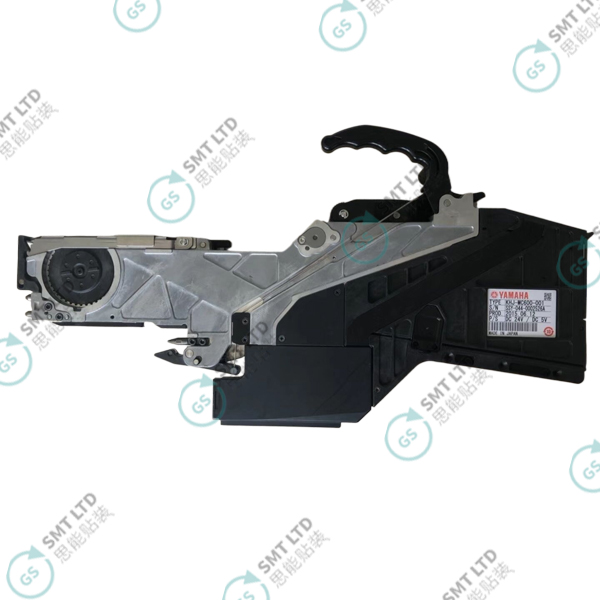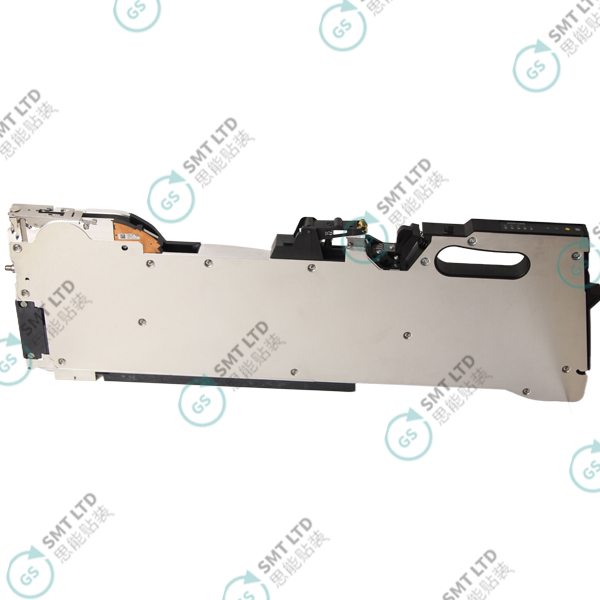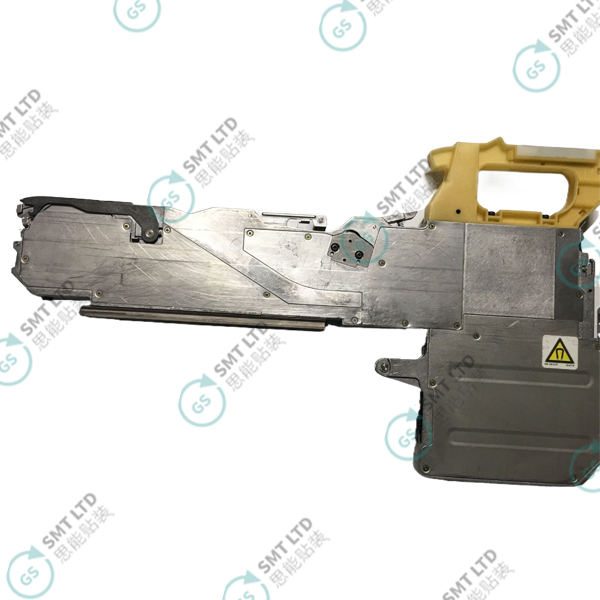Content Menu
● Introduction
● Understanding SMT Feeders
>> What is an SMT Feeder?
>> Types of SMT Feeders
>> Key Features of SMT Feeders
● Benefits of Using SMT Feeders
>> Improved Efficiency
>> Cost-Effectiveness
>> Enhanced Quality Control
>> Flexibility in Production
● Choosing the Right SMT Feeder Manufacturer
● Common Problems with SMT Feeders
>> Preventive Maintenance Tips
● Advanced Technologies in SMT Feeders
>> Smart Technology Integration
>> Vision Systems
>> Automation Compatibility
● Case Studies: Successful Implementations of SMT Feeders
>> Case Study 1: Automotive Industry
>> Case Study 2: Consumer Electronics
● Conclusion
● FAQs About SMT Feeders
Introduction
Surface Mount Technology (SMT) has revolutionized the electronics manufacturing industry, allowing for efficient assembly of complex circuits on printed circuit boards (PCBs). A crucial component of this technology is the SMT feeder, which plays a vital role in the pick-and-place process. This article explores the features, benefits, and considerations of SMT feeders, particularly from the perspective of SMT feeder manufacturers.

Understanding SMT Feeders
What is an SMT Feeder?
An SMT feeder is a device used in automated pick-and-place machines to supply components for assembly on PCBs. It holds various electronic components and feeds them into the machine at precise intervals. There are two main types of SMT feeders: mechanical and electrical, each suited for different applications and machine types.
Types of SMT Feeders
- Mechanical Feeders: Operate using springs and levers to push components into position. These feeders are typically simpler in design and can be more cost-effective for certain applications.
- Electrical Feeders: Use motors and sensors for more precise control over component feeding. These feeders are often more versatile and capable of handling a wider range of component sizes.
Key Features of SMT Feeders
1. Precision Feeding: Ensures accurate placement of components on PCBs, minimizing errors that can lead to defective products.
2. Versatility: Capable of handling a wide range of component sizes and types, from small chip resistors to larger capacitors.
3. Customization: Many manufacturers offer customizable feeders to suit specific production needs, allowing for tailored solutions that enhance efficiency.
4. Durability: High-quality materials ensure longevity and reliability in high-speed production environments, reducing downtime due to equipment failure.

Benefits of Using SMT Feeders
Improved Efficiency
SMT feeders significantly enhance production efficiency by automating the component feeding process. This reduces manual handling and speeds up the assembly line, allowing manufacturers to increase output without compromising quality.
Cost-Effectiveness
By minimizing errors and component wastage, SMT feeders contribute to lower production costs. Investing in high-quality feeders from reputable SMT feeder manufacturers can yield substantial long-term savings. The initial investment may be higher, but the reduction in defects and rework can quickly offset these costs.
Enhanced Quality Control
The precision of SMT feeders helps maintain high quality in PCB assembly. Accurate component placement reduces the likelihood of defects, leading to better overall product reliability. This is especially important in industries where safety and performance are critical, such as automotive or medical devices.
Flexibility in Production
Modern SMT feeders can be easily adjusted or reconfigured to accommodate different production runs, making them ideal for manufacturers that handle diverse product lines. This flexibility allows companies to respond quickly to market demands without significant downtime.
Choosing the Right SMT Feeder Manufacturer
When selecting an SMT feeder manufacturer, consider the following factors:
1. Experience and Reputation: Look for manufacturers with a proven track record in the industry. Established companies often have more resources for research and development, leading to better product innovation.
2. Product Range: A wide variety of feeders indicates a manufacturer's capability to meet different needs. Manufacturers that offer both mechanical and electrical options can provide solutions for various applications.
3. Customer Support: Reliable after-sales support is essential for troubleshooting and maintenance. A manufacturer that offers comprehensive training programs can help your team maximize the use of their equipment.
4. Customization Options: The ability to customize feeders can be crucial for specific production requirements, ensuring that you get a solution tailored to your unique needs.
Common Problems with SMT Feeders
Despite their advantages, SMT feeders can encounter issues that may disrupt production. Here are some common problems:
- Feeder Jams: Occur when components are misaligned or if there is debris in the feeder. Regular cleaning and maintenance can help prevent these jams.
- Inconsistent Feeding: Can result from mechanical wear or improper setup. Regular calibration checks are essential to ensure consistent performance.
- Electrical Failures: In electrical feeders, issues with motors or sensors can lead to feeding errors. Implementing a routine inspection schedule can help identify potential problems before they affect production.
Preventive Maintenance Tips
1. Regular Cleaning: Keep feeders clean to prevent jams caused by dust or debris.
2. Inspection for Wear and Tear: Regularly inspect mechanical parts for signs of wear that could lead to failure.
3. Proper Calibration: Ensure proper calibration before production runs to maintain accuracy in component placement.
4. Training Staff: Train staff on proper operation and troubleshooting techniques to minimize downtime during production.

Advanced Technologies in SMT Feeders
Smart Technology Integration
With advancements in technology, many modern SMT feeders now incorporate smart features such as IoT connectivity, allowing manufacturers to monitor performance remotely. These systems can provide real-time data on feeder operation, enabling predictive maintenance schedules that reduce unexpected downtimes.
Vision Systems
Some advanced feeders come equipped with integrated vision systems that help verify component presence before feeding them into the pick-and-place machine. This feature enhances accuracy by ensuring that only correctly positioned components are fed into the assembly line.
Automation Compatibility
Many new models are designed with automation compatibility in mind, allowing them to seamlessly integrate with other automated systems on the production floor. This compatibility increases overall efficiency by enabling coordinated operations across multiple machines.

Case Studies: Successful Implementations of SMT Feeders
Case Study 1: Automotive Industry
A leading automotive manufacturer implemented advanced SMT feeders into their assembly line, resulting in a 30% increase in productivity within six months. By utilizing electrical feeders equipped with vision systems, they minimized errors associated with component placement, significantly improving product quality.
Case Study 2: Consumer Electronics
A consumer electronics company faced challenges with high defect rates due to manual feeding processes. After switching to automated SMT feeders from a reputable manufacturer, they reduced defects by 50% while also decreasing assembly time by 20%. The ability to quickly change configurations allowed them to adapt swiftly to new product lines.
Conclusion
SMT feeders are integral to modern electronics manufacturing, providing efficiency, accuracy, and flexibility in PCB assembly processes. By partnering with reputable SMT feeder manufacturers, companies can enhance their production capabilities while ensuring high-quality output.
Investing in advanced technologies such as smart integration and vision systems further amplifies these benefits, positioning manufacturers at the forefront of industry innovation.

FAQs About SMT Feeders
1. What are the main types of SMT feeders?
- Mechanical and electrical feeders are the two primary types used in SMT applications.
2. How do I choose an SMT feeder manufacturer?
- Consider factors such as experience, product range, customer support, and customization options.
3. What common problems do SMT feeders face?
- Common issues include feeder jams, inconsistent feeding, and electrical failures.
4. How can I maintain my SMT feeders?
- Regular cleaning, inspection for wear, and proper calibration are essential maintenance practices.
5. What benefits do SMT feeders provide?
- They improve efficiency, reduce costs, enhance quality control, and offer flexibility in production.
































